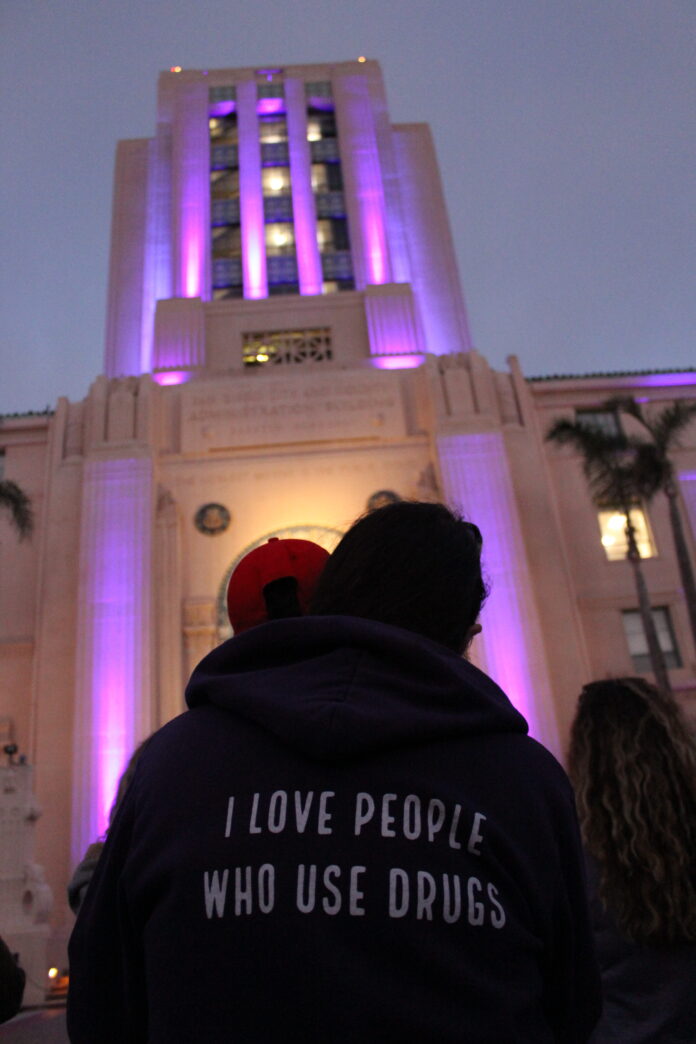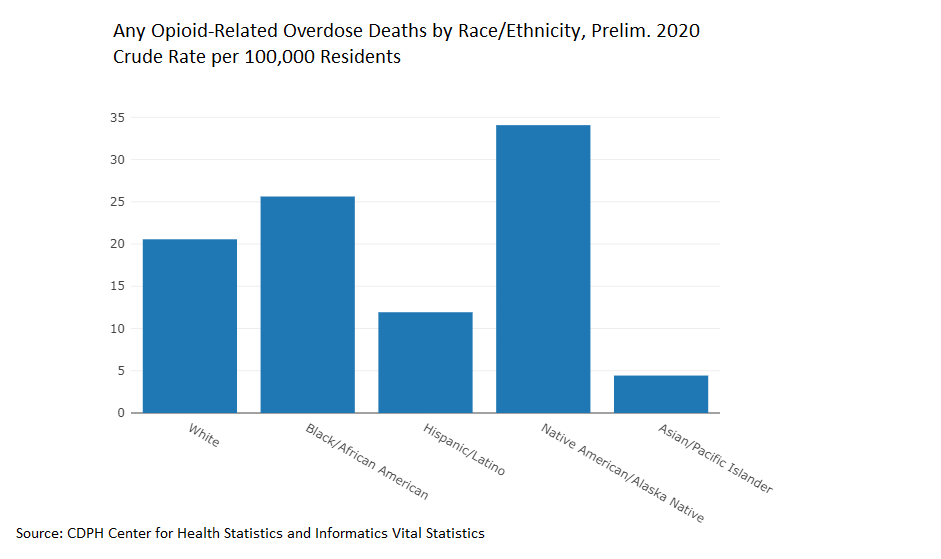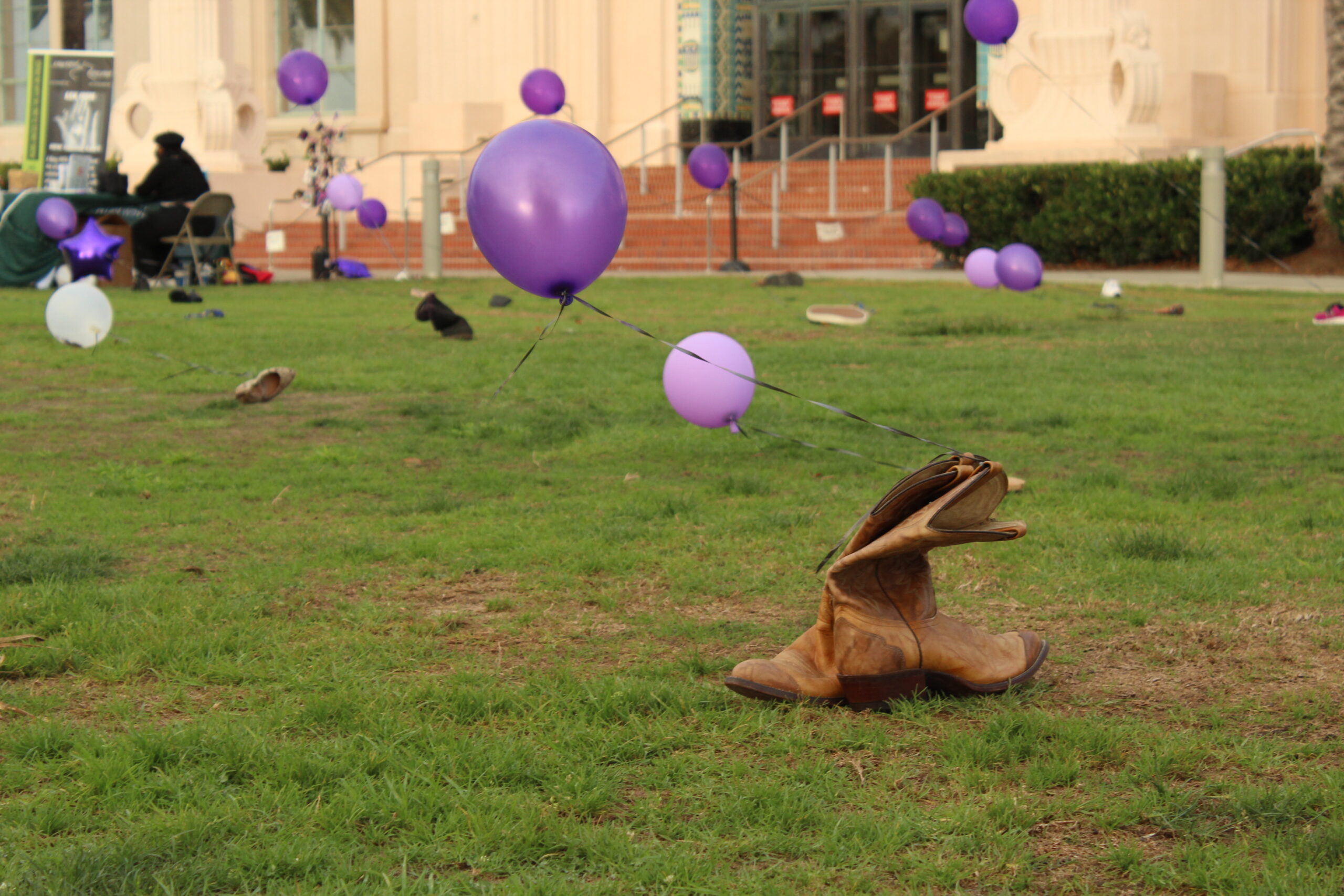
A focus on overdose awareness is a crucial element in bringing light to an alarming rise in opioid addiction occurring across the country, and here in San Diego County.
By Cori Zaragoza, Contributing Writer
SAN DIEGO AND THE OPIOID CRISIS
In 2019, there were 151 recorded deaths attributed to drug overdoses in San Diego. Comparatively, in 2020, there were 457 fentanyl-related overdose deaths. That’s a giant 202 percent increase in just one year. The Black/African American community made up 23 percent of those deaths, second only to Native American/Alaska Natives, who made up 34 percent.

Tara Stamos-Buesig, founder and executive director of the Harm Reduction Coalition of San Diego, says that the COVID-19 Pandemic has created a perfect storm for drug users, who tend to use more when they are isolated, under stress, or afraid of outside stigma. But what’s truly killing people, in numbers that have never been seen before, is one thing: fentanyl.
According to the County News Center, San Diego’s opioid crisis has mainly involved prescription opioids, but synthetic opioids such as fentanyl are now extremely prevalent, with an 82 percent increase in deaths involving fentanyl. The National Institute on Drug Abuse (NIDA) defines fentanyl as a powerful synthetic opioid that is similar to morphine, but 50 to 100 times more potent.
It can be found in prescription form and given legally to patients in extreme pain, such as after certain types of surgeries. Fentanyl can also be made and used illegally. It is now being found more and more in drugs such as cocaine, heroin, methamphetamine, and MDMA, as it is a cheap and effective additive. Because of the potency of fentanyl, it is extremely easy for users to become addicted to the drug.
“Our drug supply is poisoned and that’s not going to go anywhere any time soon,” says Stamos-Buesig. “It’s not like when I was a kid, we could party and hang out and try some stuff but we wouldn’t die. We might get sick, we might throw up but we didn’t die. Today people are dying. We can’t just babysit someone better or leave them alone; it doesn’t matter, with a fentanyl overdose they are going to die.”

WHAT YOU CAN DO
While in an ideal world, there would be no drug addiction or overdoses, the reality is far different. We as San Diegans must accept that there will always be drug use and there will always be those that suffer from the illness of drug addiction. Punishment and draconian stigmas have not and will never work, but compassion, preparedness, and empathy will.
- VOLUNTEER: April Ella, Director of Operations at A New PATH and Naloxone Training and Distribution Program Manager, began her journey in 2014 with the organization in a completely random way: “I had no background in this at all, I was Gretchen’s (Co-Founder and Executive Director of A New PATH) assistant for fashion show productions and someone had left In a New PATH and I kind of just filled that spot,” she said. “We thought it was just going to be an interim thing but the need was so high after the Narcan program started that I quit my work in Gretchen’s productions and started my work in harm reduction.”
- IMPLEMENT HARM REDUCTION: Harm reduction is defined as a set of practical strategies and ideas aimed at reducing negative consequences associated with drug use. Typically, this involves safe needle exchanges, the use of drug testing kits to see if your drugs are pure, and the use of Narcan. Narcan, also known by it’s generic name Naloxone, has been called a ‘miracle’ drug because it can literally bring someone back from the brink of death. The drug rapidly reverses an opioid overdose by binding to and blocking opiate receptors in the human body, allowing the lungs to begin breathing again and oxygen to begin flowing to the brain. It has no side effects and is safe to be given in multiple doses if needed. It is easy to use and the most immediate and effective way to save someone’s life from an opiate overdose.
Gretchen Burns Bergman, Co-Founder and Executive Director of A New PATH, has high hopes for the future of San Diego. She praised our local leaders and our Health and Human Services for advocating for the adoption of harm reduction services. “Nathan Fletcher is helping push that agenda. I think San Diego typically is very conservative. I’ve been doing this work for 22 years and I know that we could have probably gotten a lot more accomplished in that time but I would say that now, things are really open. I want to support those people that our helping to open that up. Things happen way slower than I would like to see but I have to applaud when I do see positive change.”
“We are a little bit behind the jurisdictions in other counties—LA and San Francisco, when you think about what they’re really doing out there. So this is my call to action to ask everybody to get trained with Narcan,” added Ella. “I don’t care if you think you’ll never need it—it is better to have and not need than to need and not have. Not one more, no more overdoses.”
HOW TO USE NARCAN AND WHERE TO FIND IT
Narcan is easy to use and extremely effective at preventing deaths from opiate overdoses. Instructions for use:
- Determine if a person is actually overdosing. A person who is actively overdosing will not respond to external stimuli, such as a sternal rub. Rub the sternum of the overdosing person with your knuckles; if they do not respond, then they are in trouble and need Narcan.
- Narcan comes in a nasal spray. Place the nozzle in the nostril of the overdosing person and push the plunger all the way up. You do not need to move or place the person in any position, just administer the Narcan any way you can.
- Call 9-1-1, even if the person says they are okay. Narcan only stays in the body for about 45 minutes, after which the person may begin to overdose again as the opiate receptors in the body become unblocked. It is imperative to get the person into emergency treatment after administering Narcan. TIP: When calling 9-1-1, do not give any other details besides saying that a person is unconscious and not breathing. This typically causes a faster response time and they are less likely to involve law enforcement when sending an ambulance.
In May 2021, the County News Center reported that nasal Naloxone would begin to be offered to the general public at several community-based locations and clinics throughout the region at no cost. Until the program is put in place, people who would like to be trained and given free Narcan can contact April Ella at A New PATH: 619-670-1184 or [email protected]
SD V&V coverage of local news in San Diego County is supported by the Ethnic Media Sustainability Initiative, a program created by California Black Media and Ethnic Media Services to support minority-owned-and-operated community newspapers across California.
–
READ MORE LIKE THIS
Opioid Addiction Is a Mental Health Crisis, Not a Crime Wave
Managing Pain and Opioid Addiction in the Black Community


